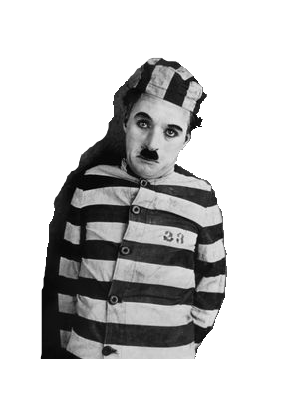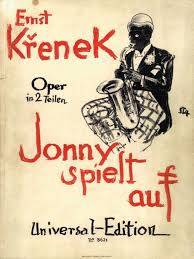Exile in Hollywood

Germany lost some of its greatest artists in the 30s and 40s of the previous century. The new Nazi regime created an increasingly unfriendly environment for progressive artists, or those with a Jewish or communist background, whose work was labelled entartet: degenerate, or un-German. Many of them were forced to flee the country, but not all were lucky enough to get away in time.
A whole lot of German degenerate composers ended up in Los Angeles where they established a thriving new music scene. Here they were free to further explore the first steps into atonality, but also to mingle with the existing American culture and the sounds of jazz, and to cooperate with the Hollywood film studios.
The breakdown of tonality
Gustav Mahler spent his entire musical life trying to combine his firm roots in the Austro-German tradition with his will to break free from their constrictive qualities. Towards the end of his life he stretched the possibilities of diatonic writing more and more, giving way to the chromaticism which would eventually lead to the total breakdown of the established tonal boundaries. This is already clearly audible in Mahler’s Kindertotenlieder. Mahler took his texts from the collection of poems Friedrich Rückert wrote shortly after the death of two of his children. Mahler’s own daughter would die four years later, after which he said it would have been impossible for him ever to have written these songs. Nun will die Sonn’ so hell aufgeh’n, the first song in the cycle of five, depicts a constant battle between grief and consolation, darkness and light, death and eternal life.
Mahler’s music has had a huge impact on all the composers on today’s programme, and not in the last place on Arnold Schönberg. Schönberg initially despised and mocked Mahler's music, but was converted by Mahler's overwhelming Third Symphony, which he considered a work of genius. Schönberg would continue on the path of chromaticism and eventually developed the twelve-tone system in which all forms of traditional tonality had been laid off.
Entartete Musik
Both Mahler and Schönberg were labelled as entartete composers because of their Jewish backgrounds (naturally Mahler had been dead for years by then, but during the Nazi regime his music was banned from the stage nonetheless). For Schönberg this meant he had to leave the country: he emigrated to Los Angeles in 1934. It was much later, after the war, that Schönberg wrote A survivor from Warsaw, in which a fictional holocaust survivor struggles to recall an experience from the Warsaw ghetto. The piece ends with the Jewish prisoners singing the Shema Yisroel (the Jewish profession of faith) as a means of musical resistance and Jewish solidarity against their Nazi captors, reminiscent of the rising sun in Mahler’s Lied.

Jonny spielt auf
Ernst Krenek (who was born in Vienna and had been shortly married to Gustav Mahler’s daughter, Anna) had no Jewish background at all, but was degraded to the status of entartete composer anyway. His opera Jonny spielt auf was a massive success across Europe and brought him considerable fame. But unfortunately it did not agree well within the Nazi Party. The opera is heavily influenced by jazz and the central character is even an African-American musician, themes which the Nazis considered to be impure and anti-nationalist. Not much later Krenek would also start employing Schönberg’s twelve-tone technique in his music, and with that his fate was sealed: Krenek too was forced to immigrate to the United States. He settled in Los Angeles, where he could make a comfortable living for himself, both as a teacher and a composer.
The Five Pieces for trombone and piano, written for Stuart Dempster, are serial pieces and employ a wide variety of extended techniques for both the trombonist and the pianist. Still, the pieces are very expressive and maintain a song-like quality throughout.
Life in paradise
Schönberg found it much harder to adapt to his life in the New World. His music was not appreciated and scarcely played. He did get appointed professor at the University of California, but was so underpaid that he had to look for other ways to come by: “Then I almost agreed to write music for a film, but fortunately asked $50,000, which, likewise fortunately, was much too much, for it would have been the end of me […]”.
Many other émigré artists felt similarly lost in their new home country and they often turned to each other and formed close knit communities. Hanns Eisler, who fled to the United States in 1938, was friendly with many of his compatriots and by his kindness, he became a link between several émigré circles who otherwise had little contact with one another. Who apart from Eisler could count among his friends Bertolt Brecht, Theodor Adorno, Thomas Mann, Arnold Schönberg, Alma Mahler and Charlie Chaplin?
The Hollywood Songbook is a set of 48 very personal works by Eisler that deal with the struggle to adjust Hollywood, the city that is ‘paradise and hell’ at the same time.
The silver screen
During the war, propaganda was used to increase support and commitment to an Allied victory. Hollywood film studios did their part by producing films that boosted morale and that featured more and more Germans and Japanese playing the villain roles. Even Walt Disney’s famous cartoon animals were suddenly fighting and mocking the Nazis.
Certainly one of the most famous wartime films produced in Hollywood is Charlie Chaplin’s The great dictator, in which Chaplin plays both a fascist dictator, Adenoid Hynkel, and a prosecuted Jewish barber. At the end of the film the barber is mistaken for Hynkel and makes an impassioned speech in which he pleads for peace and brotherhood.
In memoriam
In memory of those who didn’t make it through the war, the programme ends with a short piece by Erwin Schulhoff, who died in the Wülzburg concentration camp in 1942.
